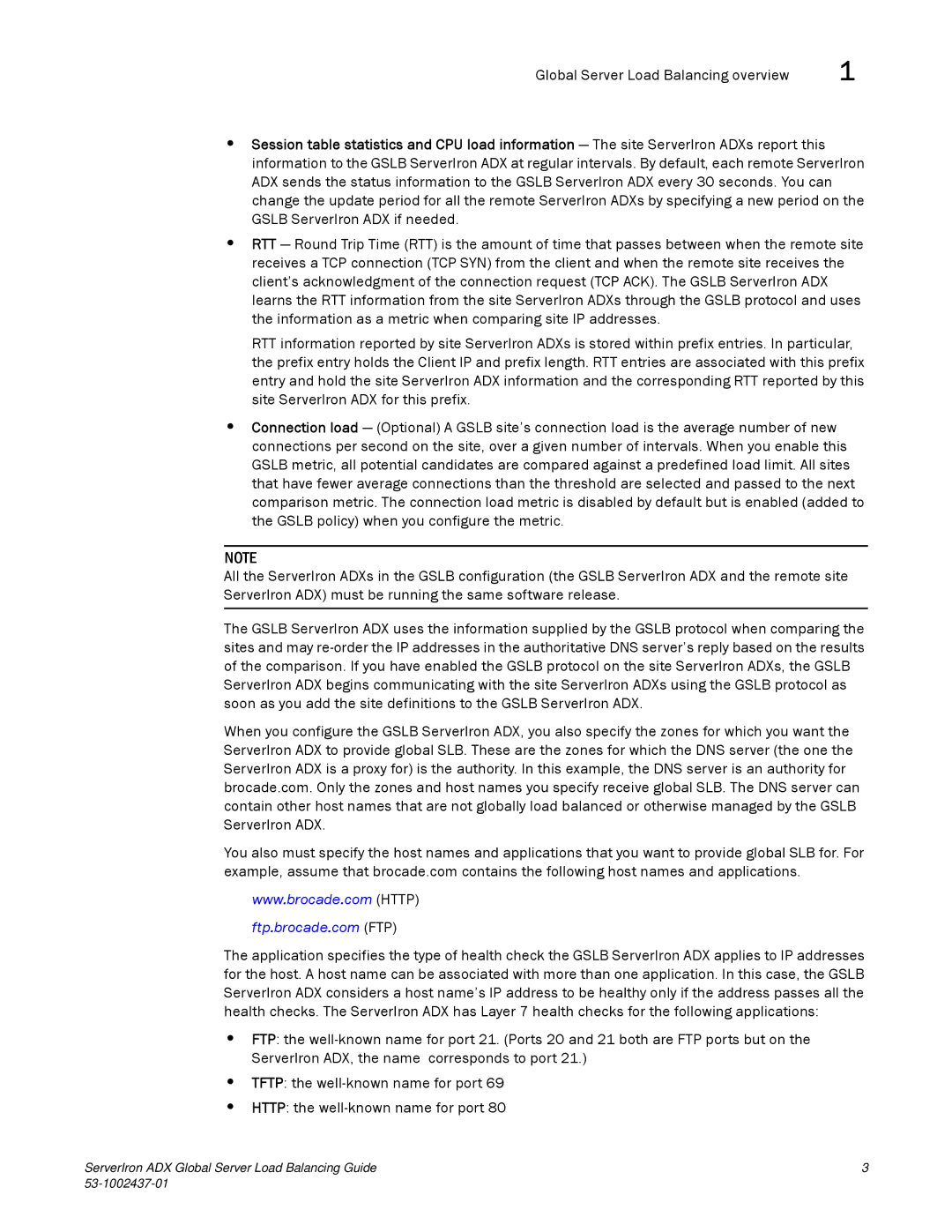
Global Server Load Balancing overview | 1 |
•Session table statistics and CPU load information — The site ServerIron ADXs report this information to the GSLB ServerIron ADX at regular intervals. By default, each remote ServerIron ADX sends the status information to the GSLB ServerIron ADX every 30 seconds. You can change the update period for all the remote ServerIron ADXs by specifying a new period on the GSLB ServerIron ADX if needed.
•RTT — Round Trip Time (RTT) is the amount of time that passes between when the remote site receives a TCP connection (TCP SYN) from the client and when the remote site receives the client’s acknowledgment of the connection request (TCP ACK). The GSLB ServerIron ADX learns the RTT information from the site ServerIron ADXs through the GSLB protocol and uses the information as a metric when comparing site IP addresses.
RTT information reported by site ServerIron ADXs is stored within prefix entries. In particular, the prefix entry holds the Client IP and prefix length. RTT entries are associated with this prefix entry and hold the site ServerIron ADX information and the corresponding RTT reported by this site ServerIron ADX for this prefix.
•Connection load — (Optional) A GSLB site’s connection load is the average number of new connections per second on the site, over a given number of intervals. When you enable this GSLB metric, all potential candidates are compared against a predefined load limit. All sites that have fewer average connections than the threshold are selected and passed to the next comparison metric. The connection load metric is disabled by default but is enabled (added to the GSLB policy) when you configure the metric.
NOTE
All the ServerIron ADXs in the GSLB configuration (the GSLB ServerIron ADX and the remote site ServerIron ADX) must be running the same software release.
The GSLB ServerIron ADX uses the information supplied by the GSLB protocol when comparing the sites and may
When you configure the GSLB ServerIron ADX, you also specify the zones for which you want the ServerIron ADX to provide global SLB. These are the zones for which the DNS server (the one the ServerIron ADX is a proxy for) is the authority. In this example, the DNS server is an authority for brocade.com. Only the zones and host names you specify receive global SLB. The DNS server can contain other host names that are not globally load balanced or otherwise managed by the GSLB ServerIron ADX.
You also must specify the host names and applications that you want to provide global SLB for. For example, assume that brocade.com contains the following host names and applications.
www.brocade.com (HTTP) ftp.brocade.com (FTP)
The application specifies the type of health check the GSLB ServerIron ADX applies to IP addresses for the host. A host name can be associated with more than one application. In this case, the GSLB ServerIron ADX considers a host name’s IP address to be healthy only if the address passes all the health checks. The ServerIron ADX has Layer 7 health checks for the following applications:
•FTP: the
•TFTP: the
•HTTP: the
ServerIron ADX Global Server Load Balancing Guide | 3 |
|
